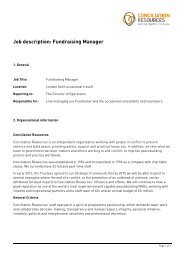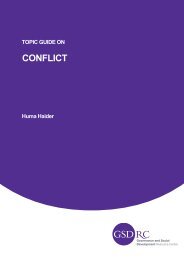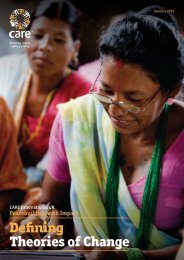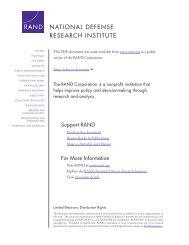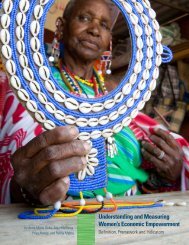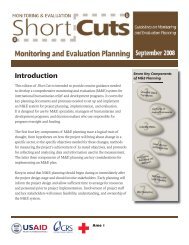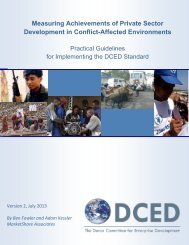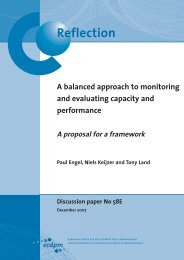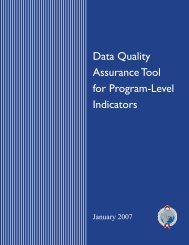Discussing Women's Empowerment - Sida
Discussing Women's Empowerment - Sida
Discussing Women's Empowerment - Sida
Create successful ePaper yourself
Turn your PDF publications into a flip-book with our unique Google optimized e-Paper software.
SAADALLAH • GENDER AND POWER IN MUSLIM SOCIETIES 115<br />
tured, efficient developmental policy.<br />
Some of the most basic questions that we may raise at this point are:<br />
What role does Islam actually play in defining the role and status of<br />
women in Muslim societies? Is it the religion, or a variant of male, patriarchal-based<br />
interpretations that affects women’s place in society? What<br />
other related factors affect and reinforce this status? How do we deal with<br />
the prerogatives for change and social development aiming at a genderjust<br />
society, within the delineated context?<br />
Religion and the Dialectics of Interpretation:<br />
Gender and Power in Islam<br />
Islam as a religion has laid the foundations of the relationship between the<br />
sexes in the Koran, the Sunna 1 , and the body of Islamic Jurisprudence or<br />
Fiqh, built up over the centuries. When we explore the dynamics of gender<br />
in Islam as a religion, we have to do it at two levels:<br />
– the level of ‘Text’ comprising the Koran and<br />
the Hadiths 2 .<br />
– the level of interpretation, comprising the influx of historical/cultural<br />
influences that are external to Islam.<br />
Considering the first level, as Bodman (1998, p. 5) reiterates “the<br />
Koran makes it unmistakably clear that in the eyes of God women are the<br />
equal of men”. This equality, however, is limited to the relationship of<br />
men and women to God, and the carrying out of religious duties and rituals.<br />
There are also certain exceptions in certain circumstantial situations<br />
(ibid., 1998, p. 5). Stowasser (1984, p. 21) further confirms that “both men<br />
and women have their full humanity and bear the burden of equal moral<br />
responsibility”.<br />
Within human relationships the picture becomes even more complex.<br />
A specification of roles is delineated where women are portrayed as being<br />
under the protection of males, be they husbands or next of kin. The hierarchical<br />
role 3 of men is mentioned in Surah 4 (Women, verse 34): “Men<br />
1. Sunna is the traditions and sayings (also known as Hadiths) of the Prophet.<br />
2. The Hadiths were recorded across different epochs of Islamic history. They have numbered in<br />
the thousands. Some have been discovered to be forgeries, whereby they were used as a tool to<br />
legitimize certain matters of issue across Islamic empires, in trying to consolidate the position of<br />
Muslim rulers, and patriarchal tendencies and traits that were assimilated cross culturally from<br />
conquered territories.<br />
3. Here I stress the use of the subjective ’role’ rather than status in the light of a more liberal interpretation<br />
of the verses, where hierarchy stems from the nature of responsibilities accrued upon<br />
men, and hence from a specific form of division of labor and role-assignations.



